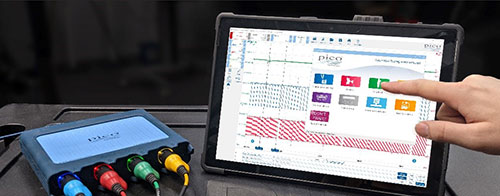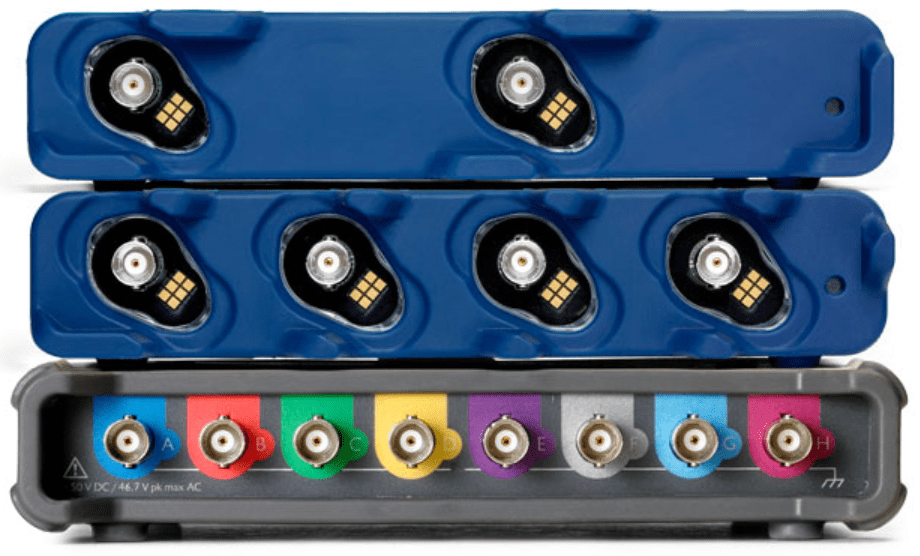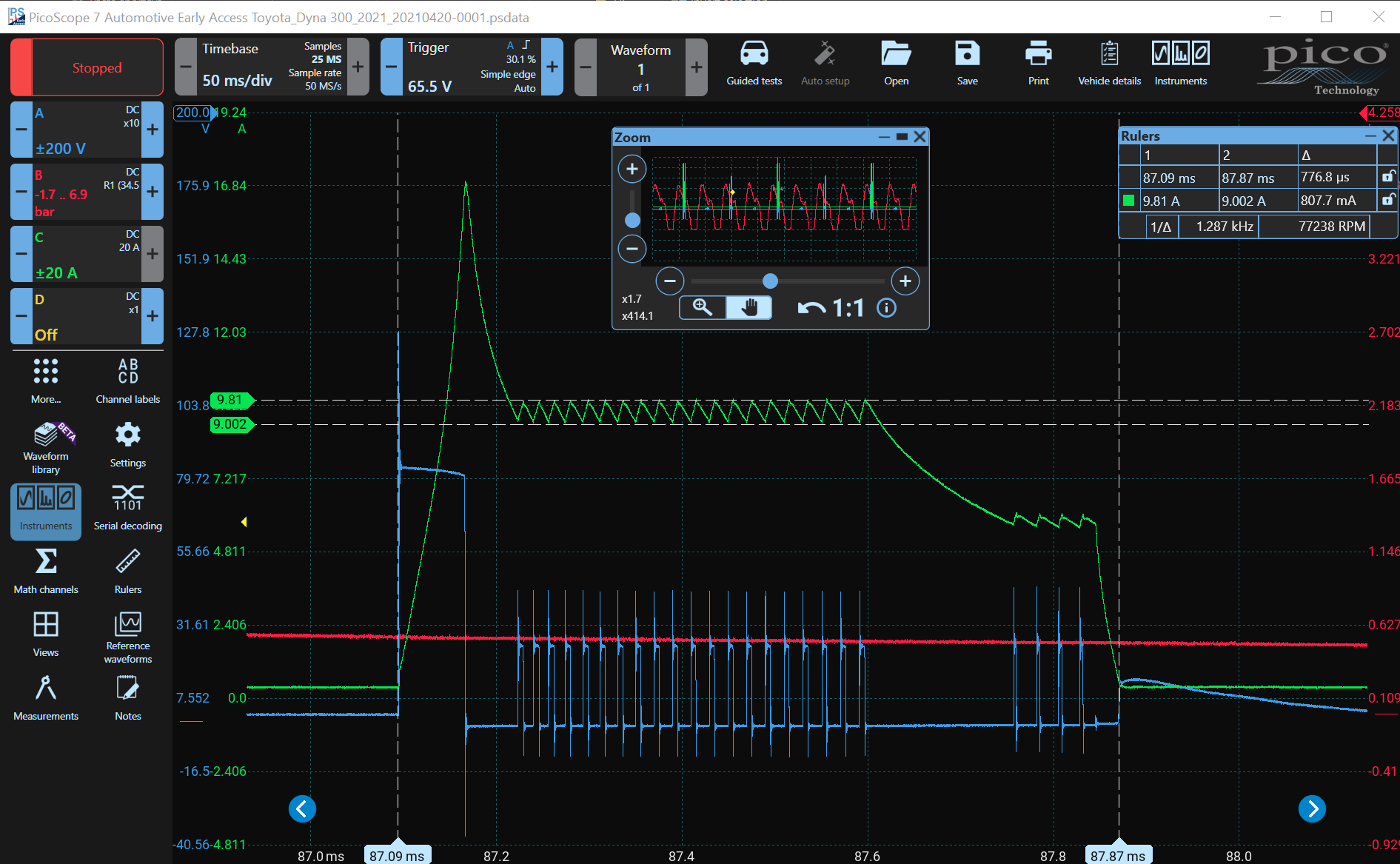
What is PicoScope Automotive Diagnostics
What is Oscilloscope Diagnostics?
Today's modern vehicle systems have a vast number of components interacting with each other. This makes it hard for a serial diagnostic tool to be 100% accurate. Oscilloscope diagnostics will increase your insight because you are not limited by the vehicle's ability to diagnose itself, which is, of course, how a scan tool works.
As we showed you in the Diagnostic Journey, using a PicoScope allows the technician to see the operation of the components in real time and takes away any guess work.
Whilst we understand just how important serial data (OBD) is to your workshop, you can only harness its full potential when it is paired with an oscilloscope.
The oscilloscope allows you to see how a component is working at the source. Don't confuse this with Live Data on a scan tool. Only by measuring directly on the component can you see exactly how the component is operating.

What can PicoScope Do?
With ever more complex diagnostic problems facing the workshop, a tool to get to the real root of the problem has never been more valuable. PicoScope provides a high level of help for you as a first-time-user. Combine this with lightning-fast capture rates to cope with the most advanced modern-day vehicle signals.
- We specialise in the manufacture of PC-Based scopes for automotive use; and
- We work with an ever-increasing number of the world's leading vehicle manufacturers for dealer-level oscilloscope diagnostics.
Consequentially, this experience ensures that PicoScope remains ahead of the competition and in constant advancement to tackle the fast-paced developments in the automotive industry.
Investing in a PicoScope
We want to show you that by investing in PicoScope, your business can become proficient in vehicle diagnosis and stay ahead of the competition.
PicoScope can be used on a wide range of vehicles and equipment including cars, trucks, bikes, agricultural and mining equipment, boats and more. When used with our range of accessories, PicoScope can also detect signals relating to vacuum, fuel, and hydraulic pressure, as well as noise, vibration and harshness (NVH).
PicoScope is safe to use, with no risk to the vehicles or equipment, thanks to our non-intrusive testing methods.
The image below shows PicoScope 7 (in dark mode) being used to examine Pulse Width Modulation (PWM) control on Channel A of an injector's current on Channel C in a Hino Truck. Notice how:
- The ECU driver applies 80 V to create a fast current rise time to open the injector as fast as possible;
- Holding current of an injector is much less than the current required to open it, so the controller allows the current to drop;
- Holding current is maintained by the ECU driver, using pulse width modulation (PWM);
- The controller drops the current to a lower value, shaping a gentle decrease in the current to prepare for closure;
- Current is reduced rapidly by the application of a negative voltage to the injector (not shown);
- The controller releases the output, and the voltage settles slowly back to zero.

Whilst all of this was happening, a WPS500X pressure sensor was monitoring exhaust pulsations on Channel B. We have zoomed into one injector event. The detail revealed by PicoScope is astounding! A scan tool is incapable of providing such comprehensive information.
Using PicoScope Automotive Software

Pico Technology's advanced oscilloscope diagnostic software is always on hand to help you, no matter what your experience of capturing component waveforms is. It turns the vehicle's electrical signals into a picture that you can see, measure, manipulate and compare to, so that you can understand exactly what is going on inside the vehicle's systems in real time.
However, at this point, we want to remind you what a waveform is. Simply put, a waveform shows how voltage changes over time.
Scope Diagnostics is only for experts... Right?
Wrong! This perception could not be further from the truth!
Whilst PicoScope may be used by some of our industry's foremost experts (thanks to outstanding performance and resolution), it is surprisingly intuitive and easy to use for a novice.
You are probably already familiar with using a multimeter as a basic check to see if a component is receiving power or a signal voltage. You will also know that the multimeter is relatively easy to connect to the component. A scope benefits from a more secure connection, but the process is much the same as connecting a multimeter.
Connections
For our scope connection, we usually use back-pinning probes or breakout leads as they give you a more secure connection, but they are just as easy to use as your multimeter's probes. Multimeter probes, battery clamps and crocodile clips are all available in PicoScope Kits.




